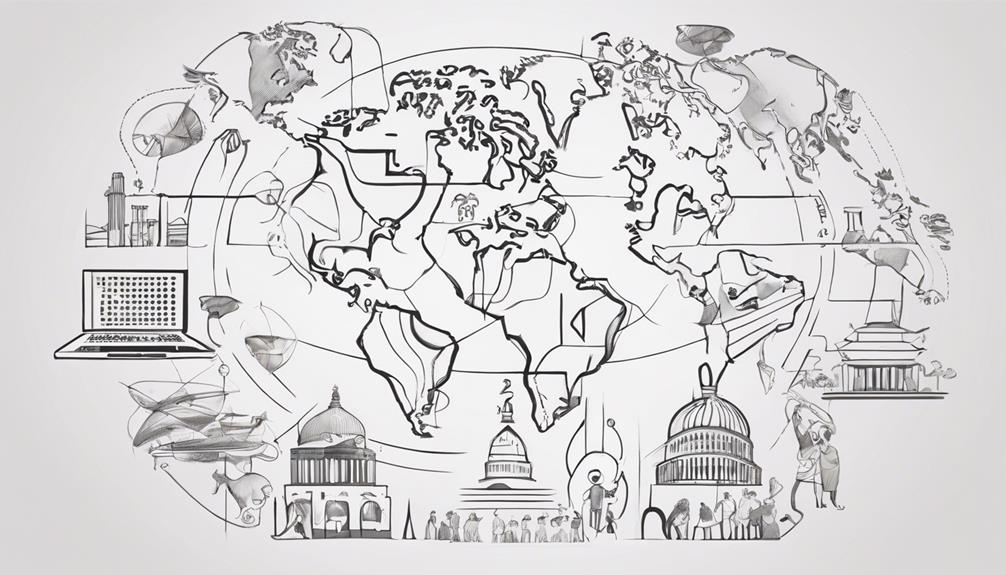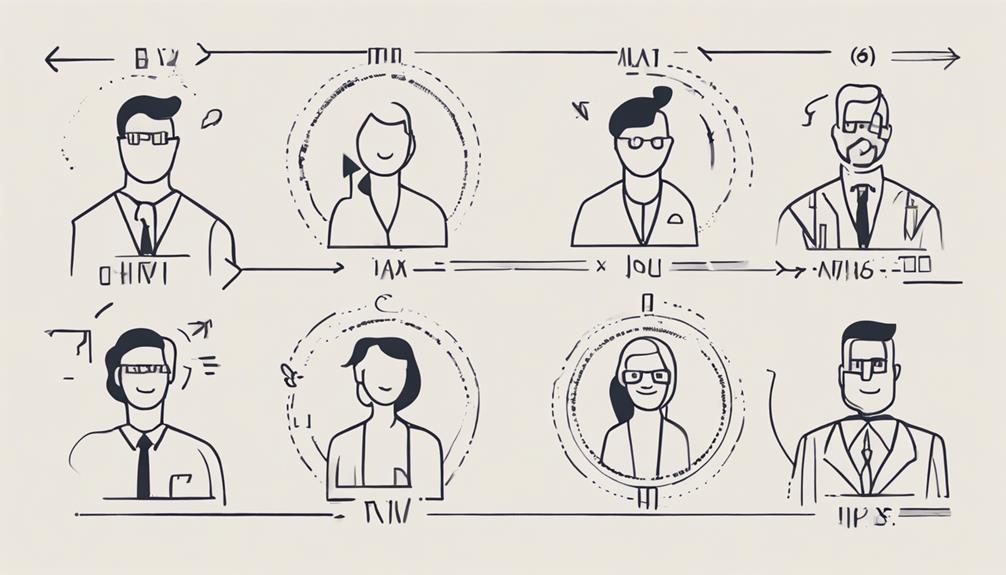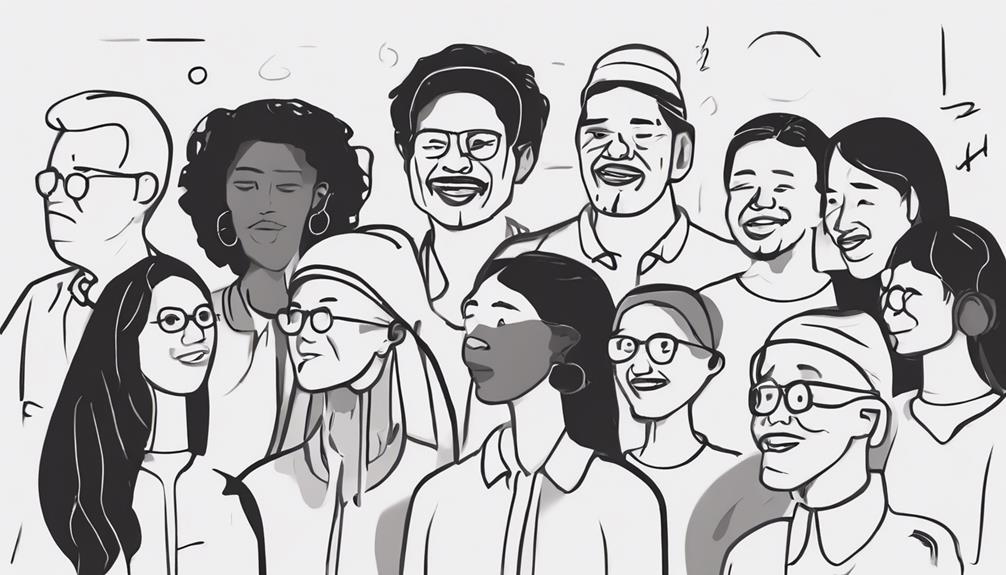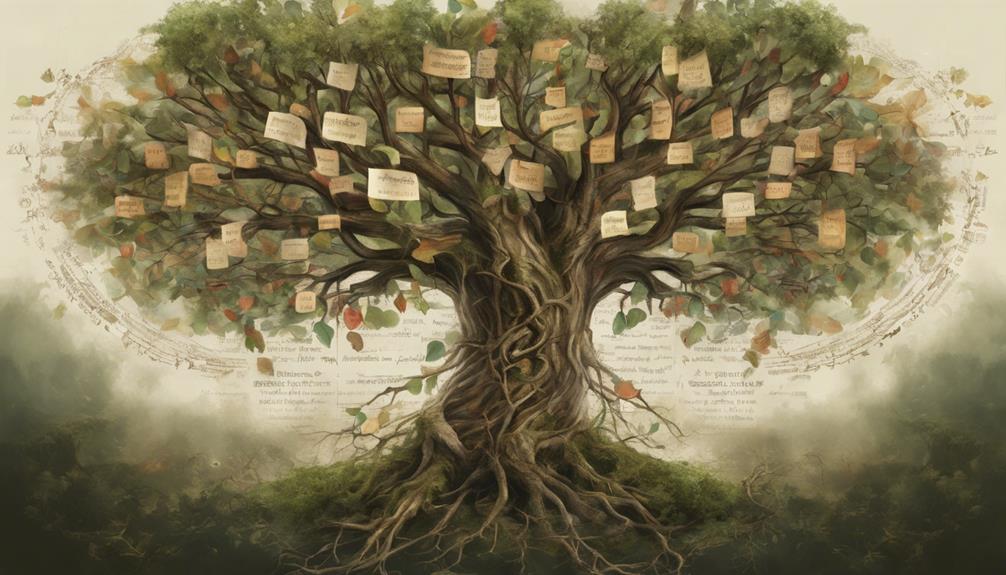Languages, as intricate systems of communication, undergo continuous transformations that reflect the dynamic nature of human interactions and societal changes. The evolution of languages over time is a complex phenomenon influenced by a myriad of interconnected factors that shape linguistic landscapes. From the subtle nuances in pronunciation to the emergence of new vocabulary driven by technological advancements, the metamorphosis of languages unveils a fascinating journey of adaptation and innovation. Understanding the mechanisms behind language evolution offers insights into the essence of human expression and the intricate tapestry of cultural heritage intertwined with linguistic diversity. The exploration of how languages change over time opens doors to a captivating realm where the past, present, and future converge in a symphony of linguistic evolution.
Key Takeaways
- Phonological elements undergo shifts influencing pronunciation and sound relationships.
- Cultural shifts and societal influences drive language evolution and vocabulary changes.
- Technology and globalization introduce new terms and communication patterns into languages.
- Language preservation efforts aim to protect endangered languages from extinction and promote linguistic diversity.
Factors Influencing Language Evolution

Language evolution is a complex process influenced by various factors such as economy, expressiveness, analogy, language contact, and cultural environment. One significant aspect of language change is the alteration in phonological elements, affecting pronunciation and phoneme relationships. Sound changes and phonological shifts are pivotal in the evolution of language. Despite the challenges historical linguistics face in tracing these changes, the Neogrammarian school asserts that they are systematic and adhere to specific patterns. Over time, language changes accumulate, leading to the development of languages and the establishment of language families with genetic connections. Changes in language meanings, spelling, semantics, and syntax mirror societal functions and influences that contribute to the evolution of language. Understanding the interplay of these factors is crucial in comprehending how languages evolve and adapt to the ever-changing cultural and societal contexts. Language is a dynamic entity that continuously changes, reflecting the multifaceted influences it encounters.
Impact of Cultural Shifts on Language
Cultural shifts play a vital role in shaping language evolution by introducing new vocabulary and expressions reflective of changing societal norms. Technological advancements also impact language by influencing the creation of new terms and altering communication patterns. Furthermore, globalization contributes to the diversification of language through the incorporation of various linguistic elements from different regions.
Culture's Language Influence
The evolution of society's norms and values significantly shapes the linguistic landscape, as cultural shifts introduce a plethora of new words, expressions, and phrases into the lexicon. Changes in societal norms and values play a crucial role in language change, influencing the tone and vocabulary used. Languages adapt to reflect cultural trends, historical events, and societal changes over time. Cultural influences can lead to the assimilation of foreign words and concepts, enriching the language. The dynamic nature of language evolution is intricately intertwined with cultural evolution, molding the way individuals communicate and express themselves. Understanding the impact of cultural shifts on language is essential for comprehending how words and expressions evolve within a society.
Technology's Vocabulary Impact
Societal linguistic evolution, deeply intertwined with cultural influences, undergoes significant transformations as technological advancements introduce a plethora of new terms and expressions into everyday language. This impact of technology on language is evident through the integration of new words and phrases that reflect the digital age. Some key aspects of technology's vocabulary impact include:
- Introduction of terms like 'selfie,' 'emoji,' and 'app' into everyday vocabulary.
- Adoption of tech-related slang and abbreviations such as 'LOL' and 'OMG.'
- Creation of a new digital language on social media platforms with terms like 'tweet,' 'like,' and 'share' becoming commonplace.
- Frequent updates to language due to the rapid pace of technological advancements.
- Influence of technology on communication styles, with words like 'Google' becoming verbs and 'hashtag' shaping online interactions.
Globalization's Dialect Changes
In the realm of linguistic evolution, the impact of globalization on dialect changes manifests through the assimilation of new cultural influences into language communities. Globalization facilitates the exchange of ideas, goods, and people, leading to an increased borrowing of words and expressions from diverse languages. This borrowing enriches dialects by introducing new vocabulary and linguistic structures, reflecting the interconnectedness of societies. Cultural shifts driven by migration patterns, trade, and media exposure play pivotal roles in shaping language variations within regions. The evolution of dialects under the influence of globalization mirrors broader societal changes and the blending of different cultural practices. Consequently, globalization fosters the development of hybrid dialects that embody the multicultural interactions characteristic of our interconnected world.
Historical Examples of Linguistic Changes
Throughout history, linguistic transformations have provided fascinating insights into the evolution of language structures. The transition from Old English to Modern English has been marked by several significant changes, showcasing how languages adapt over time. Some historical examples of linguistic changes include:
- The erosion of grammatical genders and case markings from Old English to Modern English.
- The simplification of distinctions like 'thou' and 'ye' into 'you' for ease of use.
- Language erosion leading to the disappearance of archaic terms such as 'hast' and the transformation of 'going to' into 'gonna' for efficiency.
- The intricate grammatical structures of Latin and Old English, including case markings on nouns, which simplified over time.
- The standardization in language development aiming for better understanding, resulting in the simplification of grammar rules from Latin to Modern English.
These examples highlight how languages evolve and adapt to meet the changing needs of their speakers while maintaining efficiency and clarity in communication.
Role of Technology in Language Transformation

Undoubtedly, the pervasive influence of technology on language transformation is a phenomenon that demands thorough examination and analysis. Technology plays a crucial role in language evolution, constantly introducing new words, expressions, and communication styles into our daily interactions. The digital era, characterized by social media platforms and messaging apps, has significantly contributed to this transformation by popularizing emojis, acronyms, and internet slang. Words such as 'tweet,' 'googling,' and 'selfie' have seamlessly integrated into everyday vocabulary, reflecting the impact of technology on language.
To provide a clearer perspective, the table below illustrates some key ways in which technology influences language evolution:
| Technology Influence on Language Transformation | Examples |
|---|---|
| Introduction of new words and expressions | Emojis, acronyms, internet slang |
| Adoption of tech-related terms | 'Tweet,' 'googling,' 'selfie' |
| Acceleration of language change | Rapid communication trends |
| Influence of artificial intelligence | Voice recognition technology |
| Shaping linguistic trends and expressions | Social media platforms |
Through the continuous integration of technological advancements like artificial intelligence and voice recognition, the landscape of language evolution is constantly reshaped, emphasizing the dynamic relationship between technology and linguistic transformation.
Influence of Migration on Language Diversity
The influx of migration significantly impacts the intricate tapestry of language diversity through the introduction of new lexical elements and linguistic nuances. As migrants traverse geographic boundaries, they bring with them not just their belongings but also their languages, enriching the linguistic landscape of their new homes. This phenomenon leads to a myriad of changes in language structures and vocabularies, shaping the evolution of languages like the English language and Romance languages.
- Language Fusion: Migrants often integrate linguistic features from their native languages into the local dialects, creating a fusion of vocabulary and grammar.
- Dialect Formation: Migration fosters the development of unique dialects within migrant communities, influenced by their original languages and the languages of the host country.
- Cultural Exchange: Interaction between migrants and locals facilitates a cultural exchange that reflects in the language, leading to the incorporation of new words and expressions.
- Language Evolution: The continuous contact between different linguistic groups results in the evolution and adaptation of languages over time.
- Bilingualism: Migration encourages bilingualism, giving rise to code-switching and language borrowing, further diversifying linguistic expressions within a community.
Evolution of Slang and Colloquialisms

An examination of the evolution of slang and colloquialisms reveals intricate patterns of linguistic development influenced by societal dynamics and cultural shifts. Slang terms and colloquialisms often emerge within specific cultural groups or subcultures, reflecting societal trends, pop culture influences, and generational shifts. Over time, colloquial language may transition into mainstream usage as it garners widespread acceptance, showcasing the fluidity of language change. It is noteworthy that slang terms can undergo semantic shifts, altering meanings or connotations as they evolve. The adoption of slang and colloquialisms is not limited to interpersonal interactions but can also be significantly influenced by media, technology, and global communication trends. This interplay between language change and slang evolution highlights the dynamic nature of linguistic development, where expressions once confined to niche groups can permeate broader discourse, shaping the lexicon of generations to come.
Linguistic Borrowing Across Different Languages
Linguistic borrowing, a phenomenon ubiquitous in language evolution, involves the integration of foreign words into a new linguistic system. This process is often influenced by cultural interactions, trade dynamics, and technological advancements. The impact of cross-language word adoption extends beyond mere vocabulary enrichment, shedding light on historical connections and the evolution of communication systems.
Cross-Language Word Adoption
In the realm of language evolution, the phenomenon of cross-language word adoption, also known as linguistic borrowing, plays a significant role in shaping linguistic landscapes. When languages interact, they often engage in the exchange of words and constructions, leading to a dynamic evolution of vocabulary and linguistic structures. Here are some key points to consider:
- Cross-language word adoption involves borrowing words from one language to another.
- Borrowed words typically maintain their original form, pronunciation, and meaning in the borrowing language.
- Factors such as trade, culture, and technology influence linguistic borrowing among languages in contact.
- Borrowed words can enhance a language's vocabulary, reflecting its historical interactions with other languages.
- The process of linguistic borrowing contributes to the diversity and evolution of languages over time, enriching linguistic heritage.
Impact of Cultural Exchange
Cultural exchange serves as a catalyst for linguistic borrowing across different languages, facilitating the assimilation of diverse elements into linguistic systems. This process of linguistic borrowing results in the adoption of new words and phrases from one language into another, enriching vocabulary and promoting cross-cultural communication. Borrowed words often undergo modifications in terms of pronunciation and meaning to align with the linguistic conventions of the borrowing language. Through cultural exchanges, languages evolve by incorporating borrowed elements, leading to lexical enrichment and the emergence of hybrid linguistic forms. The dynamic nature of language evolution is exemplified through the interconnectedness of different cultures via shared vocabulary.
| Linguistic Borrowing | Impact |
|---|---|
| Enriches vocabulary | Facilitates communication |
| Promotes cross-cultural understanding | Reflects language evolution |
| Creates hybrid forms | Showcases interconnectedness |
Gender-Specific Language Variations

Gender-specific language variations exhibit nuanced differences in vocabulary choices, speech patterns, and communication styles that reflect societal norms and historical language evolution. These variations are not only linguistic but also deeply rooted in cultural and social contexts. Here are five key points to consider when exploring gender-specific language variations:
- Cultural Influences: Gendered language differences can be influenced by cultural norms, traditions, and societal expectations.
- Historical Evolution: The evolution of gender-specific language variations can be traced back through the history of a language family, revealing insights into societal structures and norms.
- Perception Impact: Research indicates that language variations based on gender can impact how individuals are perceived and the power dynamics within a community.
- Communication Styles: Variances in communication styles between genders can affect interactions in both formal and informal settings.
- Promoting Inclusivity: Understanding and addressing gender-specific language variations are essential for fostering inclusive communication practices and promoting gender equality.
Impact of Globalization on Language Evolution
The phenomenon of globalization significantly influences the evolution of languages by fostering increased interconnectedness and linguistic exchange among diverse communities worldwide. Globalization leads to increased language contact, resulting in the borrowing of words and phrases between languages. International travel and trade facilitate the spread of linguistic influences, leading to the introduction of new vocabulary and expressions. Technology and social media play a significant role in accelerating language change by enabling rapid communication and exposure to diverse linguistic forms. Cultural exchange and migration contribute to the evolution of languages as people interact and integrate different linguistic elements into their speech. Globalization also fosters the development of hybrid languages and creole forms as diverse linguistic communities interact and create new linguistic norms. Below is a table highlighting the key impacts of globalization on language evolution:
| Globalization Impact on Language Evolution |
|---|
| Increased language contact and borrowing |
| Spread of linguistic influences through travel and trade |
| Acceleration of language change through technology and social media |
| Development of hybrid languages and creole forms |
Preservation Efforts for Endangered Languages

In the realm of linguistic preservation, concerted efforts are being made to safeguard endangered languages from the brink of extinction. Endangered languages face numerous threats to their survival, including globalization, urbanization, and language shift. To combat this, various preservation efforts are being undertaken, such as:
- Documentation through recordings, dictionaries, and written materials to safeguard linguistic heritage.
- Language revitalization programs that promote the use of endangered languages in education, media, and community activities.
- Collaborative partnerships between linguists, communities, and governments to support revitalization initiatives.
- Utilization of UNESCO's Atlas of the World's Languages in Danger, which categorizes languages based on endangerment levels to prioritize preservation efforts.
- Creation of language nests and immersion programs to create environments where endangered languages can be spoken and learned, ensuring their continuity for future generations.
Future Trends in Language Development
Amidst the ever-evolving landscape of human communication, the trajectory of language development is increasingly shaped by technological advancements, social dynamics, and the pervasive influence of globalization. Looking ahead, future trends in language evolution suggest a potential increase in the hybridization of languages resulting from multicultural interactions. The interconnectedness facilitated by globalization is likely to foster the blending of linguistic elements from different cultural backgrounds, leading to the emergence of new language forms.
Moreover, the integration of artificial intelligence and machine learning into daily communication practices could significantly impact language development and communication patterns. These technologies have the potential to streamline language translation, influence vocabulary usage, and even shape syntactic structures in spoken and written communication. As a consequence, English, as a global lingua franca, may undergo further transformations due to its widespread use in digital platforms and technological interfaces.
Efforts to preserve endangered languages facing extinction may intensify as communities recognize the importance of linguistic diversity. Additionally, the rise of digital communication platforms may spur the development of new language variants and communication styles, reflecting the evolving nature of human interaction in the digital age.
Frequently Asked Questions
How Language Has Change Over Time?
Language evolution is intricately tied to cultural influence and societal norms. Over time, linguistic shifts reflect the changing needs and values of a society. Vocabulary, pronunciation, grammar, and syntax adapt to meet these evolving demands. Historical texts and linguistic research provide evidence of the gradual transformation of language. As societies progress and encounter new challenges, languages naturally evolve to encapsulate these experiences, demonstrating the dynamic nature of human communication.
What Are the Causes of Language Change?
Language change is influenced by various factors such as societal influences, technology, globalization, and migration. Societal shifts, advancements in technology, increased global interactions, and movement of people all contribute to the evolution of languages. These external forces impact language structures, vocabulary, and usage patterns. By examining these influences, we can better understand the dynamic nature of language and how it adapts to the changing world around us.
What Are the Three Ways Language Changes Over Time?
Phonetic evolution, lexical borrowing, and syntactic restructuring are three pivotal ways in which language undergoes transformation over time. Phonetic evolution pertains to the alteration of sounds and speech patterns, impacting pronunciation. Lexical borrowing involves the adoption, deletion, or modification of words within a language's lexicon. Syntactic restructuring encompasses the evolution of grammatical rules governing sentence structure and word order. These processes collectively shape the dynamic evolution of languages through time.
How Do Languages Change With Time Give an Example?
Language evolution occurs through various mechanisms. For instance, historical dialects can merge to form a new language over time. One example is how Old English transformed into Middle English through the integration of Norman French vocabulary after the Norman Conquest of England in 1066. This linguistic amalgamation illustrates how languages change with time as they adapt to societal, cultural, and historical influences, showcasing the dynamic nature of language evolution.
Conclusion
In conclusion, the evolution of languages is a complex process influenced by various factors such as cultural shifts, technological advancements, migration patterns, and globalization. As languages continue to change over time, the preservation of endangered languages becomes crucial for maintaining linguistic diversity. Understanding the historical examples of linguistic changes and the impact of gender-specific language variations can provide insights into the future trends of language development. Stay tuned for the exciting and unpredictable journey of language evolution.
